There’s a lot to factor in when it comes to choosing a filter system. Choose correctly and your filter system should provide many years of trouble-free use and serve to be one of the best accessories for your camera that you’ll ever buy.
Over the last couple of years we’ve seen many filter manufacturers return to the drawing board and work out ways to make their systems easier and more convenient for photographers to use. Some companies, such as Lee Filters, have modified their LEE 100 filter holder to offer better control out in the field, while others like Benro and H&Y Filters have taken the route of fitting filters within a frame that slots into, or attaches, to a dedicated filter holder. The advantage of the latter is that you give your expensive filters better life-long protection from knocks and drops, plus it reduces the amount of physical contact we make with our filters, saving us the hassle of having to clean them as often.
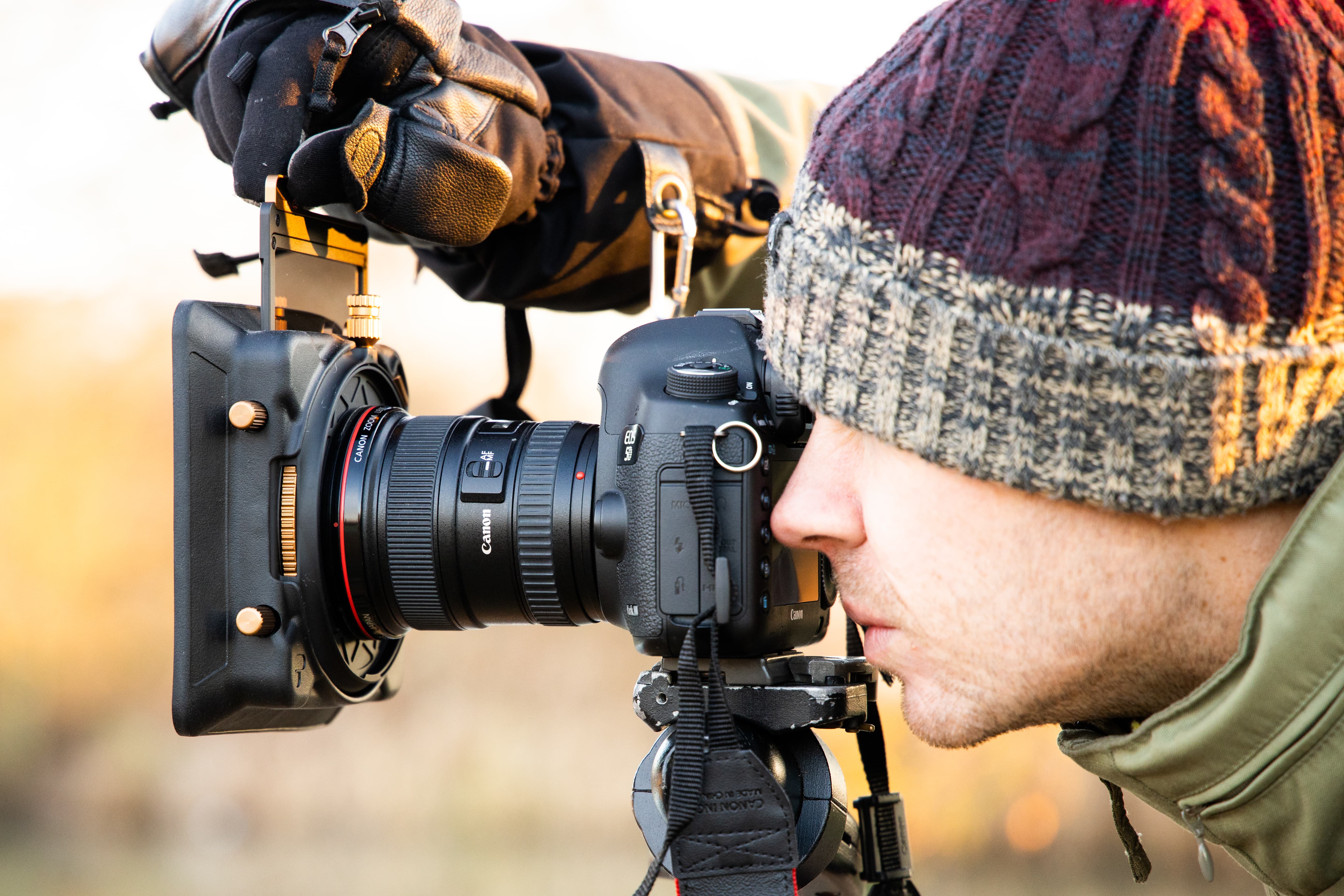
The PolarPro Summit Landscape Filter kit being tested out in the field.
Best known for their premium DJI and GoPro accessories, American-based PolarPro are one of the latest manufacturers to launch a new filter system based around the idea of using filter frames. In this review we’re taking a closer look at their Summit Landscape system, which on first glance appears to have a well thought-out design and could tempt serious landscape photographers away from the alternatives.
The Landscape Kit
PolarPro sells items for its filter system separately, but for those who are looking to buy into a system from new it makes a lot of sense buying a kit with all the relevant things you need to get started. The Summit Landscape Kit we’re looking at is extensive. With it you get what’s known as the core (a posh name for the filter holder), two thread plates (77mm and 82mm), a ND64 (6-stop) filter, a ND4-GR (2-stop) soft graduated ND filter, a circular polariser filter, a hood and a practical carry case to keep it all together.
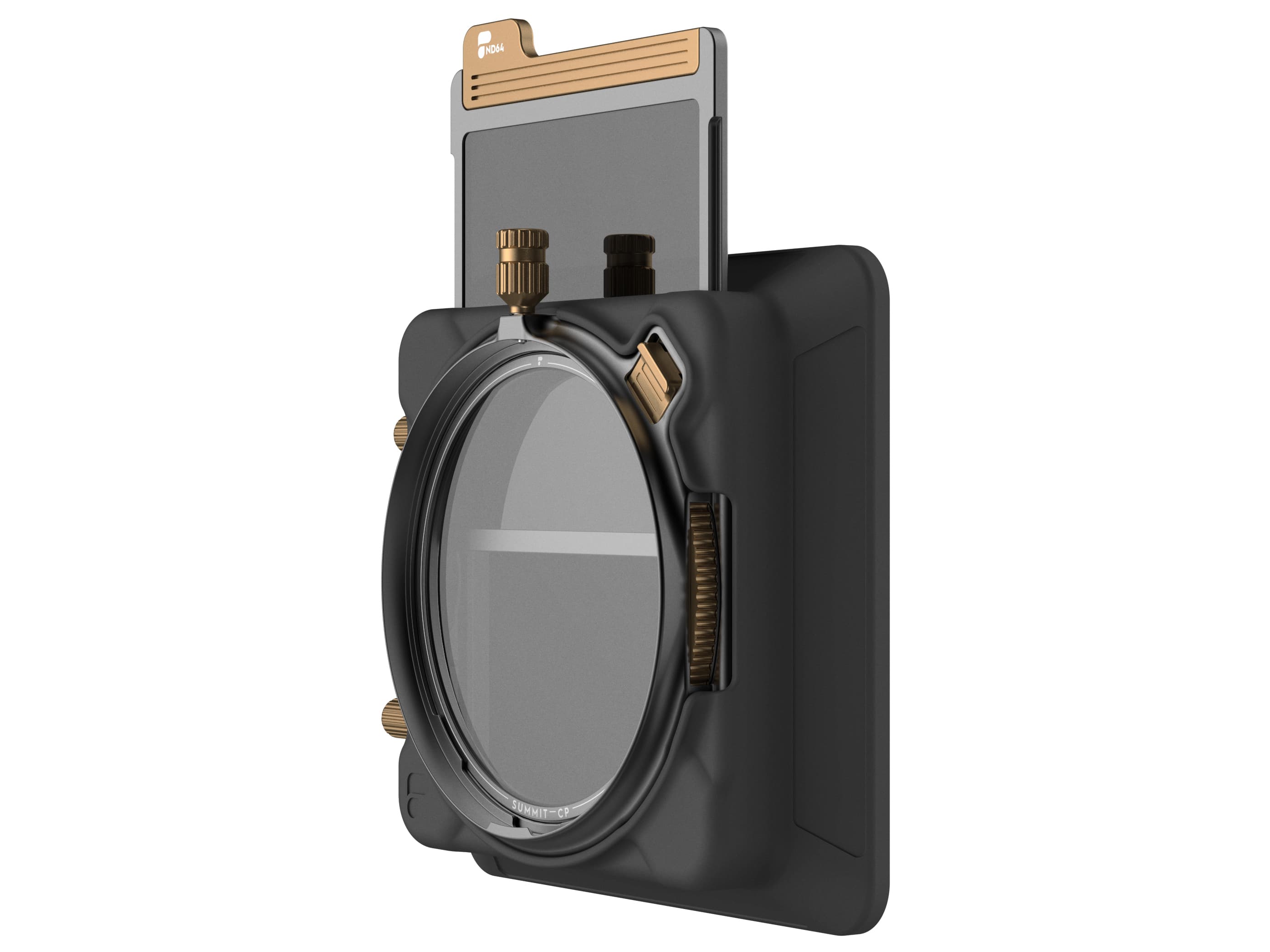
Filters are slotted in to what’s called a ‘core’. The Summit Landscape Filter kit is supplied with a rubber hood and circular polariser, both of which are fitted here
Unlike some 100mm filter systems that allow you to slot your existing filters into a square 100x100mm or rectangular 100x150mm filter frame, the Summit system is different. The core will only accept PolarPro’s Summit filters that feature their own integrated filter frame. While this might put off some who’ve built up a large selection of glass or resin slot-in filters over the years, it won’t bother those making a fresh start or are looking to buy a filter system for the first time.
The metal frames that surround the ND64 and ND4-GR filters, like the thread plates and the core, are made from lightweight aluminum that gives them a highly durable and hardwearing feel compared to plastic alternatives.
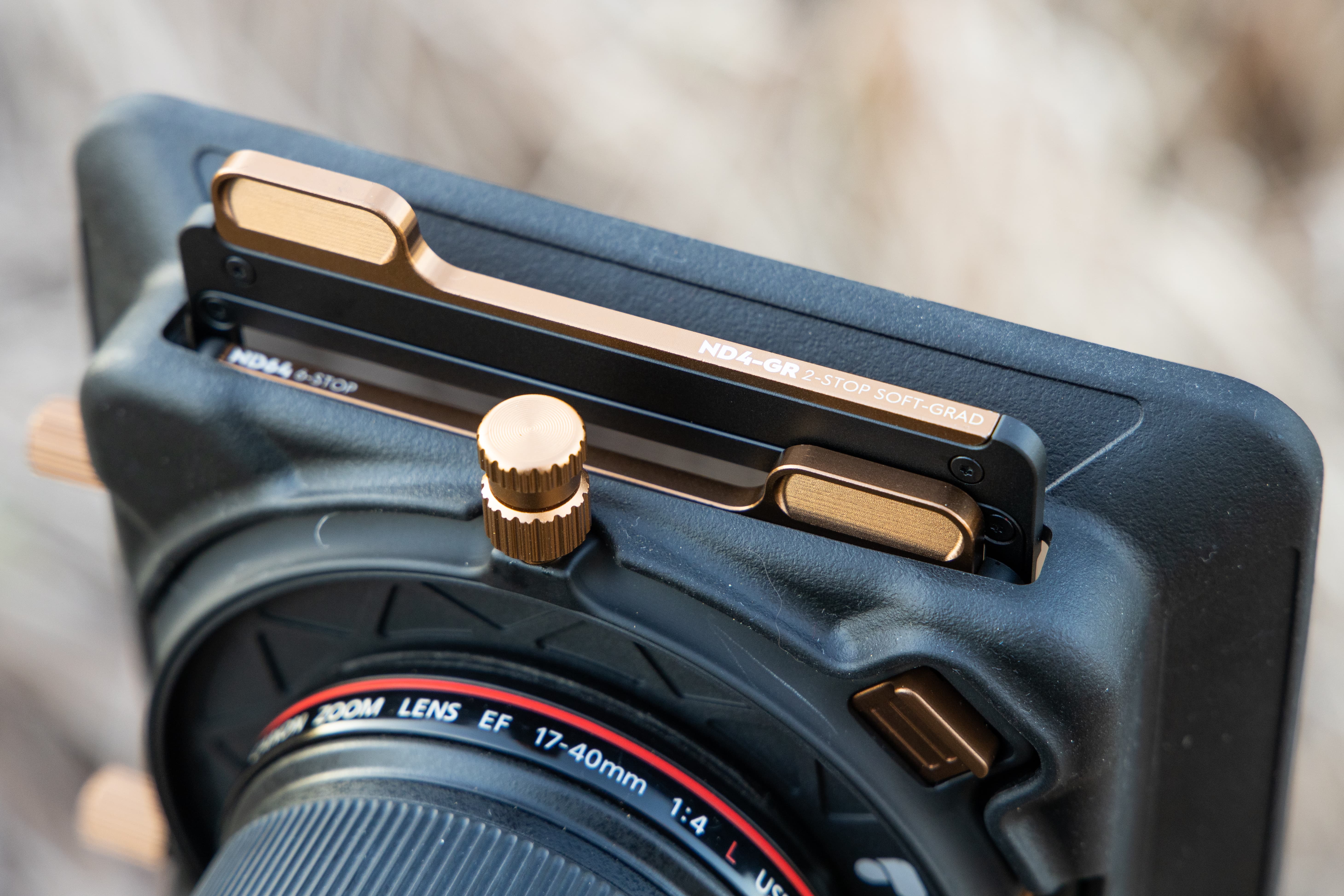
Here we see the ND64 (6-stop) filter and ND4-GR soft graduated filter being used. The maximum number of filters that can be slotted into the core is currently limited to two.
The core itself is precision machined and exquisitely finished in matte black with gold locking screws, a circular polariser release and circular polariser wheels on either side. With the circular polariser installed, the wheels can be turned from behind the camera to vary the amount of polarisation that’s filtered without having to physically touch the filter. There’s a fair amount of resistance, but this does mean it’ll only move when you want it to with no risk of it shifting if the polariser wheels are brushed or knocked accidentally.
The two gold locking screws that lock filters in place aren’t captive so it’s worth baring in mind that they should only be loosened a few turns to allow the filters to slide into their respective slots otherwise they could fall out and get lost.
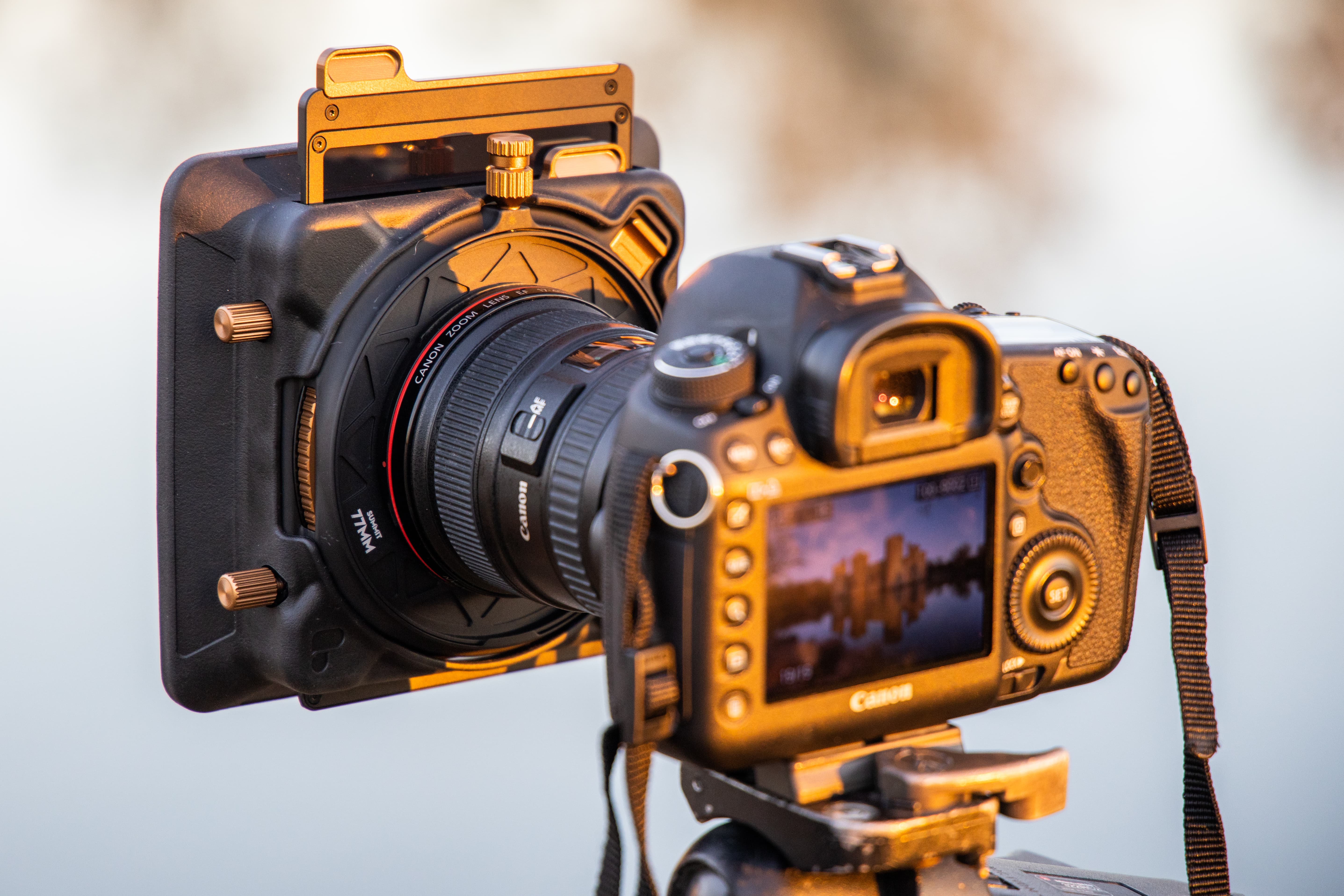
A view from the rear showing the two gold locking screws at the side, which are used to secure filters in place
The other gold lock yet to be mentioned is the adapter lock. After screwing a thread plate (better known as an adapter ring) onto the front of the lens, the adapter lip at the bottom of the core engages and secures via the adapter lock. The great thing about the adapter lock is that it can be loosened to safely rotate the core and your filters to the desired angle before it’s tightened while still giving you the option to remove the core instantly from the thread plate by lifting the top section of the lock upwards. Out of the box you get the sense it’s a well engineered and thought through system that’s made to the highest of standards.
In practical use
The kit comes with a thorough installation guide, but for anyone who has used a professional filter system before it only takes a matter of minutes before you’re fully accustomed to it. The main thing to remember is that the neutral density (ND) slot is the one closest to the lens, with the gradient slot positioned just ahead of it.

During our testing we used the ND64 (6-stop) filter and ND4-GR soft graduated filter together
Try sliding a graduated filter into the ND slot and you’ll quickly realise it only goes so far. Dot indicators located on the side of the core by the gradient lock and neutral density lock help to distinguish which is which. By keeping the gradient lock tightened when it’s not being used you’re never at risk of slotting an ND filter into the gradient slot by accident.
My real-world experience of using the system outdoors on a landscape shoot in freezing cold winter conditions with winter gloves revealed what a superb system it is to use. The ND64 (6-stop) filter helped create long exposures and iron out ripples on water to enhance a reflection and I was impressed by both how smoothly the filter frame drops into the core and how easy it is to pull out again while maintaining a light-tight seal. No issues with light leaks were experienced and colour was faithfully represented with no hint of any colour cast.

Bodiam Castle in Kent on a cold winter morning, Canon EOS 5D Mark III, Canon EF 17-40mm f/4 L USM, 15secs at f/16, ISO 100 (taken with PolarPro Summit ND64 filter)
The ND4-GR filter was used in combination with the ND64 filter and with its lifting tab being on the opposite side it meant there was no conflict when it came to removing one filter before the other. Another good thing about PolarPro’s Summit Graduated ND filters is that they have an end stop, which prevents them being pushed all the way through the filter slot and falling out the other side.
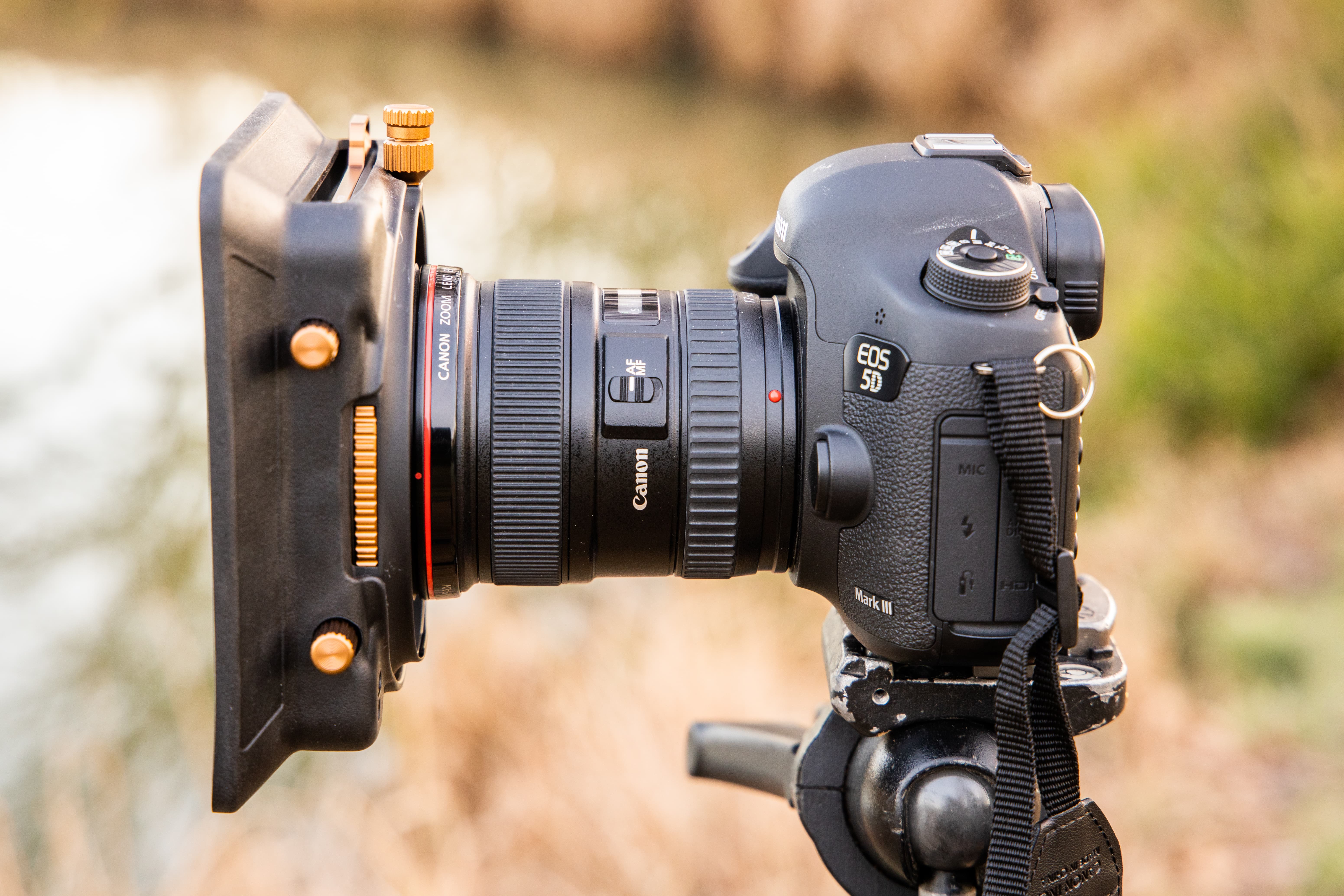
The rubber hood has a slit at the top, which allows you to drop filters in and pull them out easily
As for vignetting at the edges of the frame, I experienced no signs of dark corners at the wide end using a 17-40mm wide-angle zoom lens on a full frame camera with the ND64 and ND4-GR filters loaded and the malleable snap-on rubber hood fitted. I also used the filter system with a 16-35mm wide-angle lens on a full-frame camera and experienced no issues with the core or rubber hood obscuring the corners of the frame.
The rubber hood
The Summit core, better known to most as a filter holder, is rather unique in the way it’s designed to accept a custom hood that reduces stray light and ghosting affecting our images. The hood, which is made from soft rubber, is extremely malleable and easy to fit.
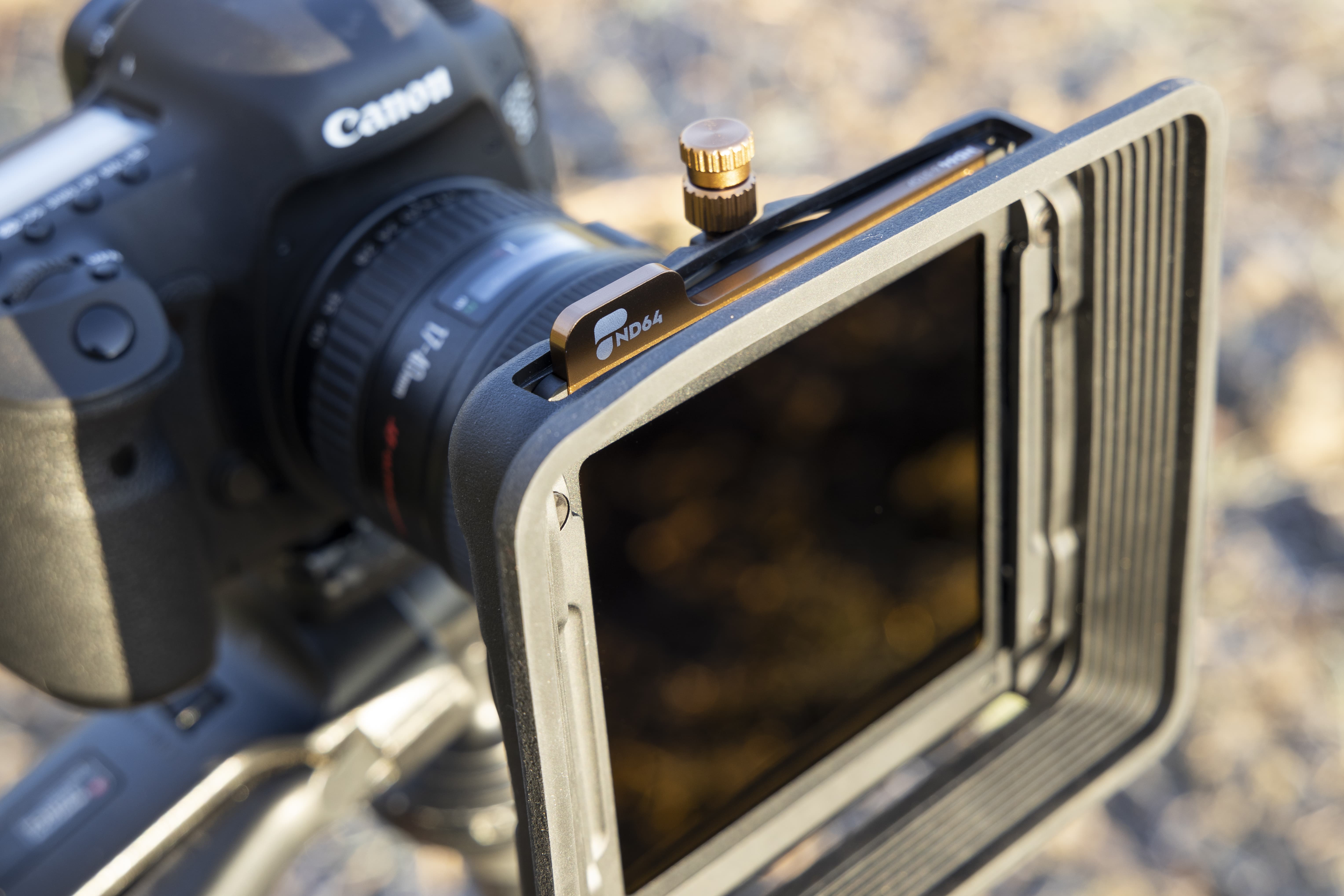
Once the two gold locking screws have been fed through their respective holes in the hood it’s simply a case of pulling the opposite side of the hood forward until the corners locate. Filters can still be inserted and removed when the hood is attached through a slit at the top and I found the rubber easy to clean with a wet wipe when it gets mucky.
Thread plates and other filters
The Landscape kit is a great starting point for photographers who plan to buy into the Summit system. For those who’d like to expand their kit, there’s the choice of buying five thread plates (67mm, 72mm, 77mm, 82mm and 95mm), which cost $34.99 each. If you’d prefer different thread plates to the 77mm and 82mm sizes that come with the landscape kit it’s possible to customise your kit at the time of order.
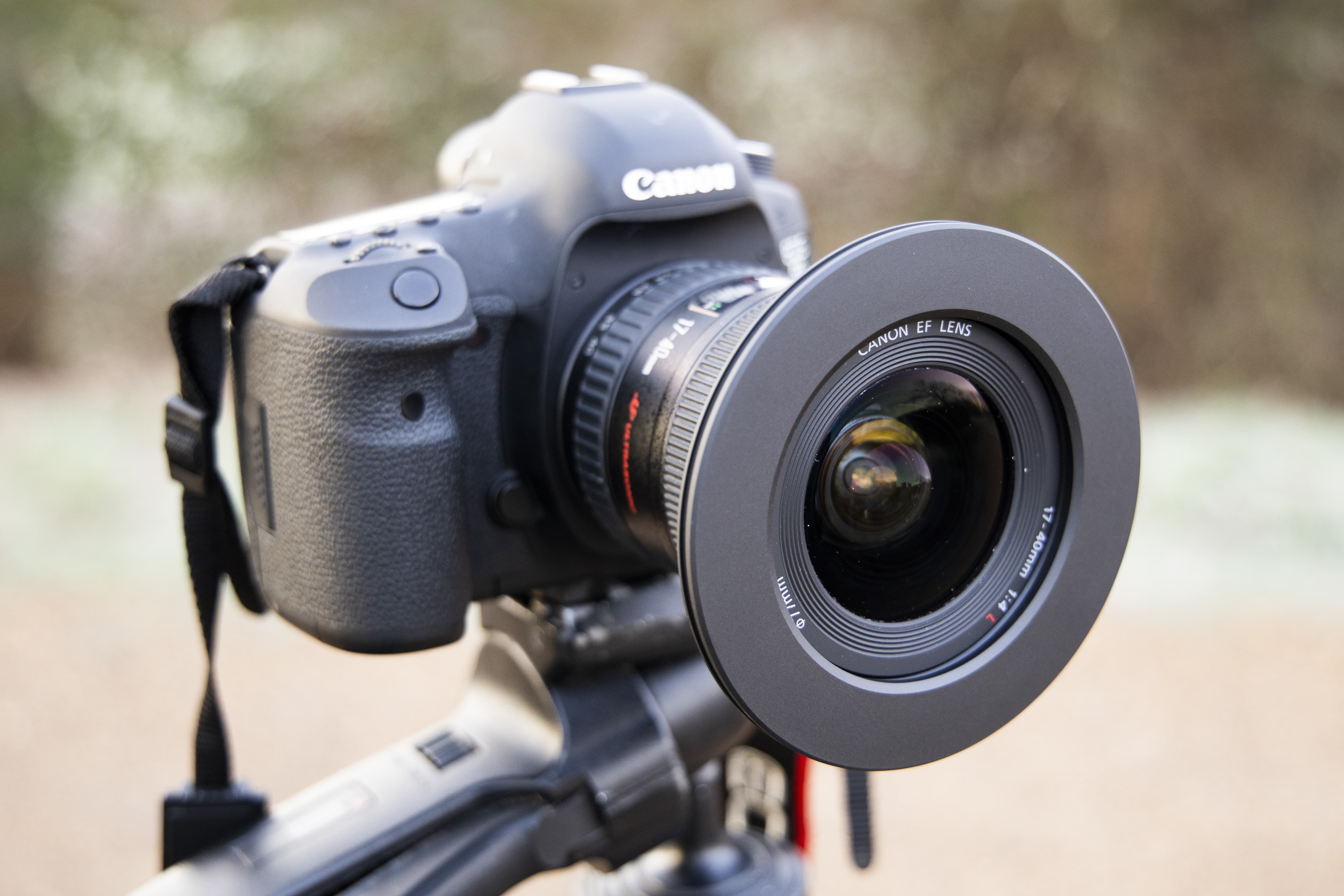
Thread plates, like the one attached to the Canon EF 17-40mm f/4 L USM pictured here, are available in five different sizes
In addition, there are currently four Neutral Density filters available for the system – an ND8 (3-stop), ND64 (6-stop), ND1000 (10-stop) and ND100K (15-stop) costing $199.99 each. As well as the ND4-GR soft graduated neutral density filter, an ND8-GR soft graduated filter is also available for $249.99. Asked the question of whether PolarPro might release a series of hard ND graduated filters in the future, we received a reply that confirmed they’re currently in development and will be available soon.
Every filter for the system, including the circular polariser that’s supplied with the Landscape kit, is made from fused Quartz glass and feature 16 layers of coatings in the manufacturing process.
Verdict
There are some new products that are worthy of recognition for how well they’re designed and the PolarPro Summit Landscape kit is definitely one of them. With aluminium frames built around each filter for fingerprint-free installation, an ultra-lightweight core, superbly implemented low-profile circular polariser and hassle-free setup and user experience, it’s one of the most refined filter systems we’ve ever used.
Constructed to a first-class standard, it’s a system that’s befitting serious enthusiast and professional use in the harshest of environments. What’s more, it lets you work quickly with minimal fuss, which is a must for any good filter system.

AP’s Michael Topham out testing the Polar Pro Summit Landscape Filter System
The only downsides are that you can’t use it with existing filters that you might already own, there aren’t currently any medium or hard graduated ND filters available and it’s expensive (around £535 for the Landscape kit) before you factor in shipping ($50), duties and taxes on top.
If the price doesn’t faze you and you’re after a long-lasting filter system for landscape photography that’ll provide excellent service and won’t let you down, PolarPro’s Summit Filter System should definitely be on your radar.








